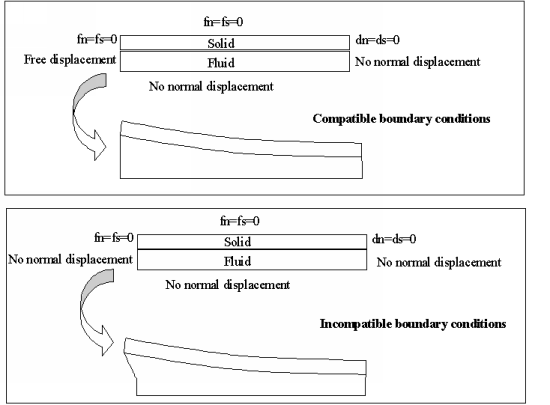When an elastic domain is deformed, adjacent flow domains are modified. To reduce nonlinearities that may be introduced in this process, you can keep the flow domain unchanged by disabling the update of coordinates. When you choose to use updated coordinates, the coordinates for elastic deformation in the elastic domain are given by:
(27–4) |
To activate (or deactivate) this option, select Switch to [update of coordinates] or Switch to [no update of coordinates] in the material data menu of the elastic sub-task.
This option allows you to check deformations before using them on the flow domain under the following conditions:
if the deformation has any effect, or a very minor effect on the flow behavior.
if the deformation or the stresses are significant for your simulation.
if there is any trouble with convergence.
In addition to using updated coordinates, a remeshing technique must be defined for the flow domain. Boundary conditions need to be defined in such a way that they are compatible with the boundary conditions of the elastic sub-task, at the intersection with the elastic solid. Any incompatibility in boundary conditions can lead to deformation of the mesh.
Figure 27.1: Compatibility of Boundary Conditions illustrates both compatible and incompatible boundary conditions (top and bottom views, respectively). For both cases, boundary conditions along the left boundary sections are considered (Figure 27.1: Compatibility of Boundary Conditions). For compatible boundary conditions, the solid zone has zero force applied and the free displacement boundary condition is imposed on the flow domain for the remeshing technique. Due to the shear force along the wall, the solid endures a deformation in the direction of flow and the fluid follows this deformation.
For incompatible boundary conditions (Figure 27.1: Compatibility of Boundary Conditions) the solid zone has zero force applied and no normal displacement imposed for the remeshing technique on the flow domain. Due to the shear force along the wall, the solid endures a deformation in the flow direction while the no normal displacement boundary condition prevents the fluid region from following this deformation. Instead, the element beside the interface is deformed, in response to the solid deformation.



